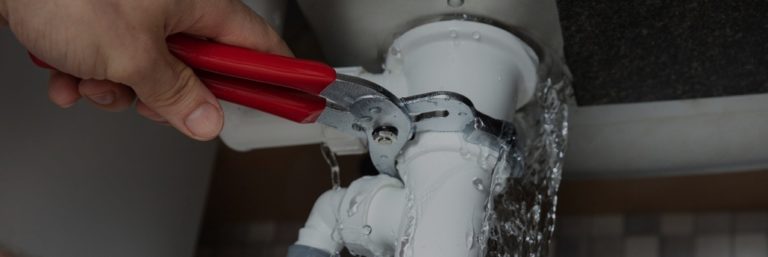How to Discover and also Repair Work Water Leaks-- A Comprehensive Guide
How to Discover and also Repair Work Water Leaks-- A Comprehensive Guide
Blog Article
Just how do you feel on the subject of Detecting hidden plumbing leaks?

Early detection of leaking water lines can alleviate a potential calamity. Some tiny water leakages might not be visible.
1. Analyze the Water Meter
Every residence has a water meter. Examining it is a surefire manner in which assists you find leaks. For starters, shut off all the water sources. Make sure nobody will flush, make use of the tap, shower, run the cleaning device or dish washer. From there, most likely to the meter and watch if it will certainly alter. Since no one is using it, there should be no movements. If it moves, that shows a fast-moving leakage. Furthermore, if you identify no changes, wait a hr or more and check back once more. This indicates you may have a slow-moving leakage that could even be below ground.
2. Inspect Water Intake
If you spot unexpected modifications, in spite of your consumption being the exact same, it means that you have leaks in your plumbing system. An unexpected spike in your bill suggests a fast-moving leak.
Meanwhile, a stable rise every month, even with the very same practices, reveals you have a sluggish leakage that's likewise slowly escalating. Call a plumber to completely examine your home, specifically if you really feel a warm location on your floor with piping underneath.
3. Do a Food Coloring Test
When it comes to water intake, 30% comes from bathrooms. Test to see if they are running properly. Decline flecks of food color in the container and wait 10 mins. There's a leakage in between the tank and dish if the color somehow infiltrates your dish throughout that time without flushing.
4. Asses Outside Lines
Don't forget to inspect your outdoor water lines as well. Must water permeate out of the connection, you have a loosened rubber gasket. One little leakage can squander bunches of water and also spike your water expense.
5. Evaluate the situation and also evaluate
Property owners should make it a habit to check under the sink counters and also even inside cupboards for any bad odor or mold and mildew development. These two warnings indicate a leak so timely attention is called for. Doing routine inspections, even bi-annually, can save you from a significant issue.
Check for discolorations and also compromising as a lot of devices and pipes have a life expectancy. If you believe leaking water lines in your plumbing system, don't wait for it to rise.
Early discovery of dripping water lines can minimize a prospective disaster. Some small water leaks might not be noticeable. Checking it is a surefire way that helps you discover leakages. One tiny leak can throw away tons of water as well as spike your water expense.
If you think leaking water lines in your plumbing system, do not wait for it to escalate.
How to Know If Your Home Has a Hidden Leak
Water Meter Reveals Inexplicable Water Usage
If you’d like to test whether or not there’s a leak somewhere in your home, you can do this using your water meter. Here is how to conduct the test:
Don’t use any water in your home for at least 30 minutes; this also means not turning on faucets or water-using appliances.
Go outside, and check your water meter for activity.
If your water meter shows that there was activity, even though no one was using any water, this proves that there is a leak in your home.Visible Mold or Mildew Growth
Leaks behind walls create moist, dark environments that allow mold and mildew to grow and thrive. Eventually, you might see mold growth forming on the wall closest to a hidden leak.
If mold is growing in an area that receives a high amount of moisture, such as a bathroom, it may simply be an indication that better ventilation is needed. However, if you see mold growth on a wall or the ceiling in an area where you would not expect, you probably have a hidden leak.
Musty, Mildew Odor
Sometimes you might not be able to see the mold or mildew that is growing as a result of a leak. However, the smell can give the problem away just as easily. If you catch a whiff of something musty, there’s a good chance that old water is collecting somewhere in your home that you can’t see.
Stained/Warped Walls, Ceilings, or Floors
When your home soaks up water, a variety of red flags can become visible, including ceiling stains, bubbling drywall, warped walls, and sagging floors. While these issues can be caused by excess humidity, they can also be signs that a pipe or plumbing connection has started leaking behind your walls.
Inexplicably High Water Bill
After a while, you get a general sense for what your water bill should be. If you own a pool or sprinkler system, your bill will tend to be higher during summer. However, if you receive a water bill that seems especially high, and you can’t figure out what caused it, then you may have a hidden leak somewhere that’s increasing your bill.
https://www.plumbingjoint.com/blog/2019/july/how-to-know-if-your-home-has-a-hidden-leak/

As a person who reads on Detecting hidden plumbing leaks, I thought sharing that excerpt was a good thing. Don't hesitate to take the time to promote this blog post if you liked it. I am grateful for your time. Kindly check our website back soon.
Report this page